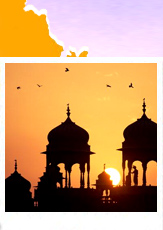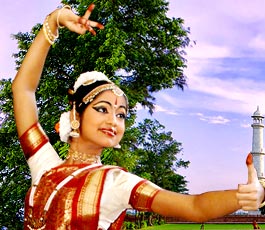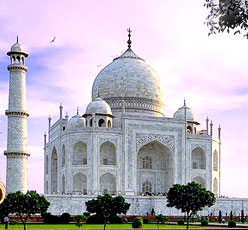From time immemorial, India has been considered to be a land with rich cultural heritage. Centuries after centuries, this country has seen rulers like Rajputs, Moughals, English, Portuguese. Besides, various religions also flourished at different times in this country like Buddhism, Jainism etc. All these factors have played their role in making an impact on the culture of this country. One can find the traces of different cultures in Music, dance, architecture, festivities, languages spoken, traditional beliefs and customs, food and many more like these. It is the development in these aspects of life that makes the heritage of India one of the most vibrant and most exhaustive.
We believe in the continuity and dynamism of Indian cultural heritage and it is our endeavor to help people from world over get acquainted with same. And there can not be a better way to understand this than to experience it. Travel to India with our cultural tour packages and understand why this heritage has withstood thousands of years and still going strong.
Music
Classical music of India has its roots beliefs of the people and an amalgamation with other systems has not erased this source. Careful intonation has always been at the core of Indian classical music. The chanting of sacred words and phrases like Om required total precision because these chants were part of what it took to maintain the order of the universe.
Dances
India offers a number of classical dance forms, each of which can be traced to different parts of the country and representing the culture of a certain region or a group of people. The beginning of the contemporary styles of classical dances can be traced to the period 1300-1400 A.D.
The dance forms range from temple dances like Bharatnatyam, oddissi and mohiniyattam, to kathakali, symbolizing the victory of truth over falsehood. Kathak and Kuchipudi are means to recite religious and mythological tales to the accompaniment music, mime and dance. Manipuri, and Dandiya Raas represents the celebration of Radha-Krishna's togetherness.
Art and Crafts
The talent of the Indian artisans' is till date visible in the age-old monuments / constructions. The sculptures boast of their creativity and hard work. The numerous sculptures on temple walls are all hewn out of hard rock & last to date. Rock-cut architecture was perfected by the Buddhists, and was followed by several Hindu rulers. In Southern India Pallavas excelled in this art form.
The sculptures or idols in temples are made of granite & the Utsava murthis are made of bronze & panchaloha. Apart from these, there are the huge Iyyanar statues & horses exist in South Indian villages.
Information on Cultural and Heritage tours India, Culture Tourism in India and Cultural Heritage of India.
Cultural & Heritage Tourism
 Indian Architecture Indian architecture is a rich amalgam of various architectural styles, wherein the influences of various regions and dynasties, find due expression. With the Islamic style concentrating only on monuments and the Hindu style being more religious, thematically, Indian architecture, is indeed, |

Indian Cuisine The major culinary influences on Indian cuisine resulted from significant historical invasions, including the Greeks, Mughal Portuguese and British. Today, Rich and diverse Indian cuisine, coupled with the celebrated hospitality of the people is the crowning glory of the opulent Indian culture. |

Indian Fairs And Festivals India is a rich land which has attracted invaders from Central Europe and Asia who left their imprint on this land, its religions and its lifestyles over 40 centuries. As a result, today, Indian celebrates more festivals than |

People And Religion India is probably the only country with the largest and most diverse mixture of races. All the five major racial types - Australoid, Mongoloid, Europoid, Caucasian and Negroid - find representation among the people of India. |
Indian Languages India has 17 major languages and 844 different dialects. The Sanskrit of the Aryan settlers has merged with the earlier Dravidian vernaculars to give rise to new languages. Hindi, spoken by about 45 per cent of the population, is the national language. English has also been retained as a language for official communication. Indian literature dates back several millennia to the hymns of the vedic Aryans. | |









